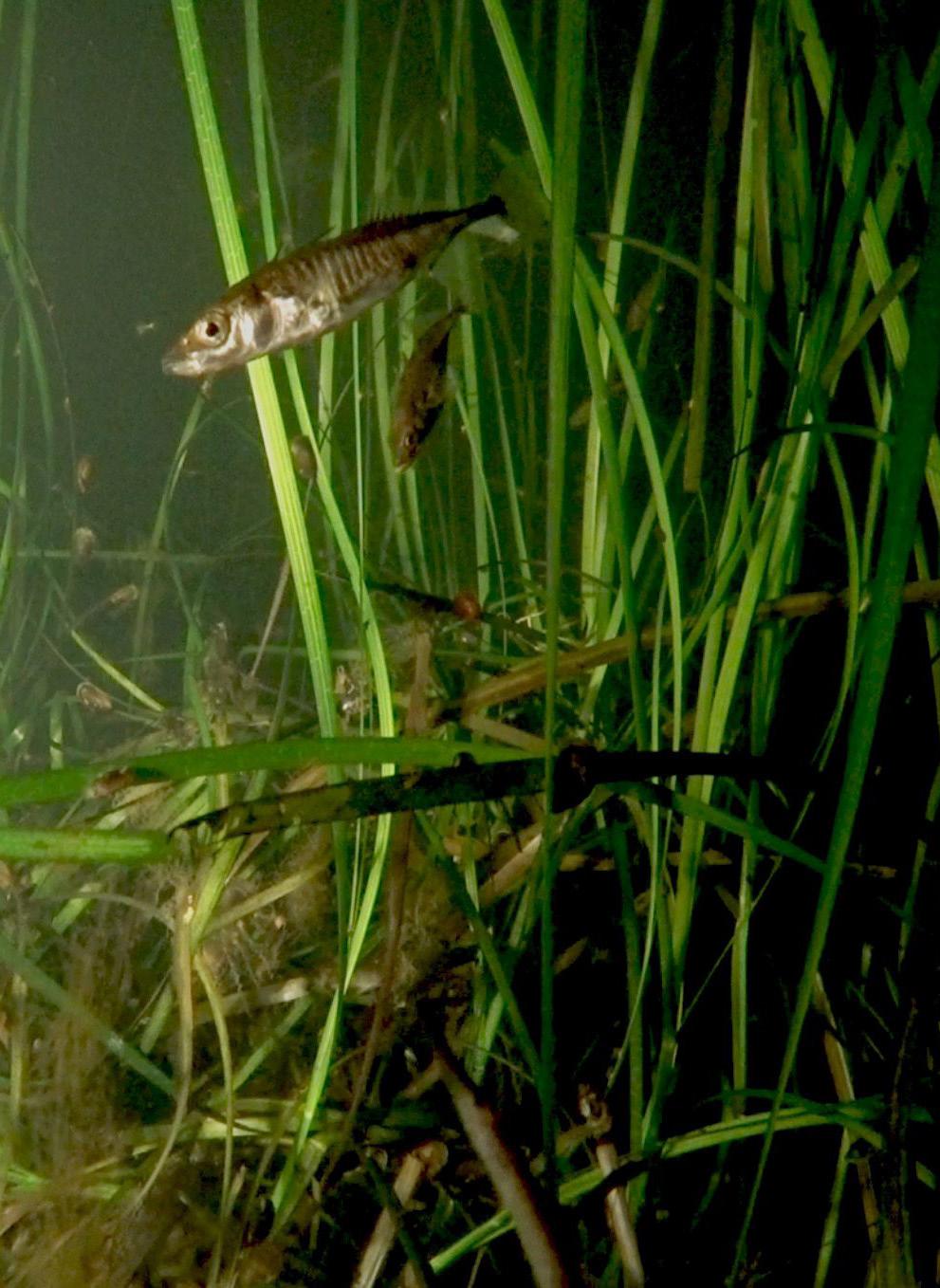
9 minute read
UNDERWATER PLANT THAT IS MORE IMPORTANT AND MORE THREATENED THAN CORAL REEFS: EELGRASS
Underwater plant that is more important and threatened than coral reefs: eelgrass
Af Kamila Sarkeeva, University of Manchester/DTU Aqua
Advertisement
You have probably seen eelgrass many times before - it gets washed up on the shore, it tickles your legs when you go for a swim, it tangles in fishing nets. Eelgrass forms dense underwater meadows that used to cover Euroasian coastlines from the UK to Japan and across the Atlantic - along the shorelines of Canada and the US. Eelgrass, quite frankly, does not look like the most exciting underwater plant; however, its role in the marine ecosystems is truly crucial for the survival of many species.
WHAT IS EELGRASS?
Eelgrass (ålegræs) or seagrass is an underwater flowering plant, not a seaweed (tang/ alge). Evolutionarily, this is unique because it implies that land-based ancestors of eelgrasses returned back to water and developed special adaptations that have affected their physiology, pollination and dispersal to accommodate the fully submerged life cycle (1). Common name ‘eelgrass’ is usually given to species within Zosteraceae family, however Zostera marina is the eelgrass species that can be most commonly encountered along Danish coastlines. As a highly photosynthesising plant, eelgrass requires an abundance of light; therefore, it usually inhabits shallow depths along fjords and coasts, forming eelgrass meadows.
WHY IS IT IMPORTANT?
Eelgrass meadows play a crucial role in coastal ecosystems; they provide a variety of ecosystem services that enrich and form the habitats of the coastal fauna.
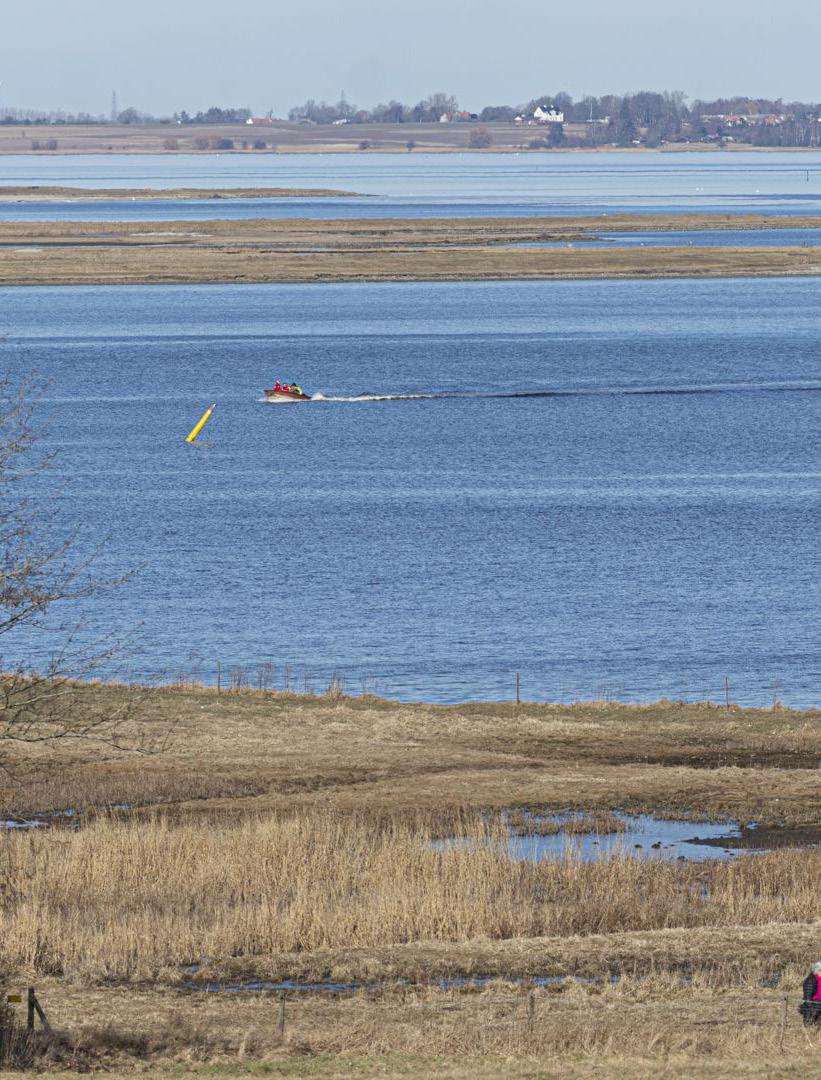
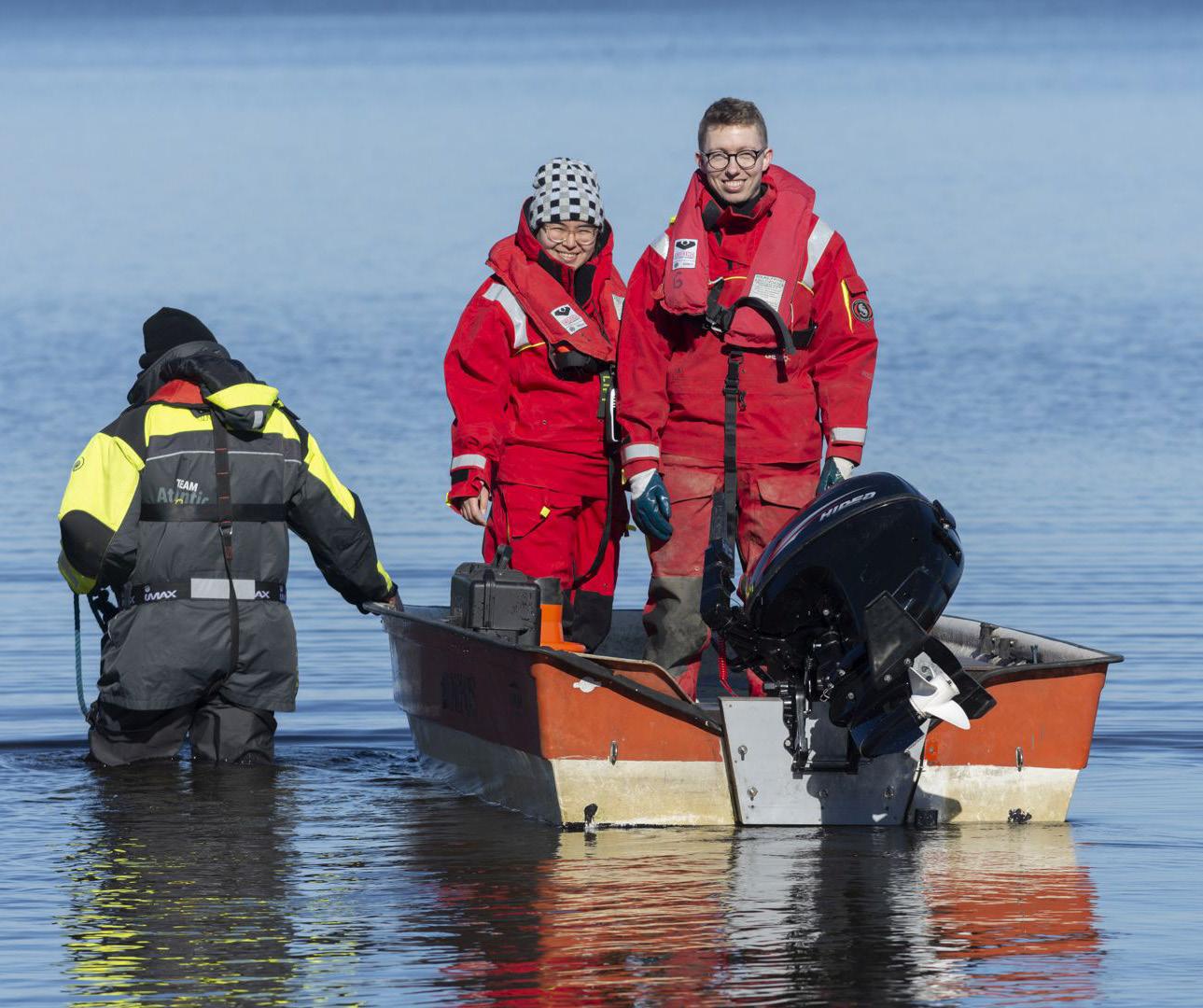


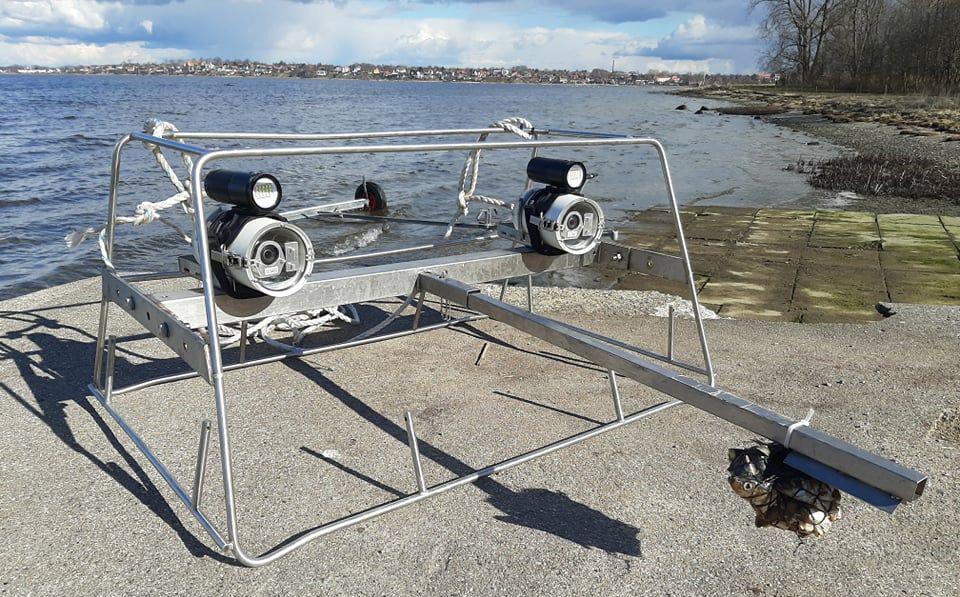
First of all, eelgrass meadows sequester organic carbon and store it, forming a ‘blue carbon sink’ - accumulating organic debris and waste and holding it in sediment. Storing carbon like this, in the ocean, prevents it from being released into the atmosphere in the form of greenhouse gases. This is especially crucial now, as once abundant terrestrial carbon sinks - trees - face devastating deforestation all around the globe. Worldwide, seagrasses account for almost 20% of ocean carbon sequestration; these are outstanding numbers, considering seagrasses’ limitation to shallow depths (2) Eelgrass has the ability to not only store carbon in the sediment but also affect the physical environment of its habitat - coastlines. Eelgrass rhizomes hold the sediment and its leaves affect the hydrodynamics by decreasing the wave energy and water turbidity. This promotes sediment retention and light availability for the benthos (3). A US study showed that of coastal areas that lost eelgrass coverage, 90% have experienced erosion; with depth increasing by 50% in some areas. Erosion and suspension promote further degradation of shorelines; this, together with sea level rises, can lead to flooding and sea storms (4). Furthermore, eelgrass itself provides an important habitat and nursery grounds for many commercially important species like Atlantic cod and sea trout. In this sense, eelgrass meadows are biodiversity hotspots like mangroves and coral reefs. However, eelgrass is more widespread across the temporal waters and is tolerant to a wider range of temperatures than coral reefs. Yet, the importance of eelgrass is not highlighted enough in the media, compared to public awareness of corals and coral bleaching. Because of the wide range of eelgrass and its responsiveness to environmental stressors, eelgrass is considered a biological sentinel. Changes in eelgrass coverage can indicate important trends and shifts in coastal water ecosystems, as well as effects of anthropogenic activities. Eelgrass has suffered detrimental losses in its coverage worldwide due to eutrophication. Coincidentally, such high sensitivity to eutrophication also makes eelgrass a great indicator for nutrient run-off in coastal waters; US National Estuarine Eutrophication Assessment uses eelgrass as one of the indicators of pollution (1).
HOW DID EELGRASS COVERAGE DECLINE?
Eelgrass decline was first recorded at the start of the 20th century; unsurprisingly, amid other factors, anthropogenic activities are responsible for such a decline. In the 1930’s, eelgrass across the Northern Atlantic was wiped out by ‘eelgrass wasting disease’ caused by the pathogen Labyrinthula zosterae. This disease caused a decline in waterfowl populations and the exceptional extinction of a marine gastropod - eelgrass limpet (Lottia alveus). Along Danish coastli-
1+2: Deployments of underwater cameras at Roskilde fjord by DTU students. Author: Jesper Nørgaard Weng. 3: View from Gershøj havn, Roskilde Fjord. Author: Niels Winther Christensen. 4: Stereo BRUVs – baited remote underwater video system. Two cameras with flashlights are attached to a sturdy frame to prevent toppling over. A bait arm is attached in front of the cameras, with bait-bag visible from both cameras for recordings. Author: Svenja Stoehr
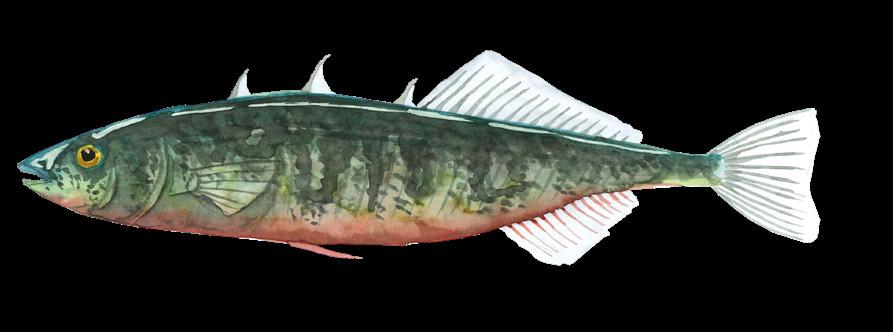

nes, this disease wiped 90% of previous eelgrass coverage. Only by the 1960’s eelgrass had made a substantial recovery of its populations, only to decrease once again a decade later due to eutrophication (5,6). Furthermore, physical anthropogenic alterations played an upsetting role in eelgrass decline. Bottom trawling mechanically removes the eelgrass from the sediment and reduces light penetration due to suspension of sediment particles. Coastal construction and development of marinas, canal estates and other leads to direct loss of habitat; these human alterations can also prevent shoreline migration and therefore decrease the genetic diversity of eelgrass. It is impossible to not mention the role of climate change and eutrophication in eelgrass decline. Rising water temperatures of Baltic Sea increase light requirements and mortality rates of eelgrass. Eutrophication reduces eelgrass depth limit – maximum depth that eelgrass can colonise. This happens as eutrophication contributes to the particulate matter suspended in the water column which in turn reduces light availability for eelgrass and limits it to shallower depths (5).
4A
4B
4C
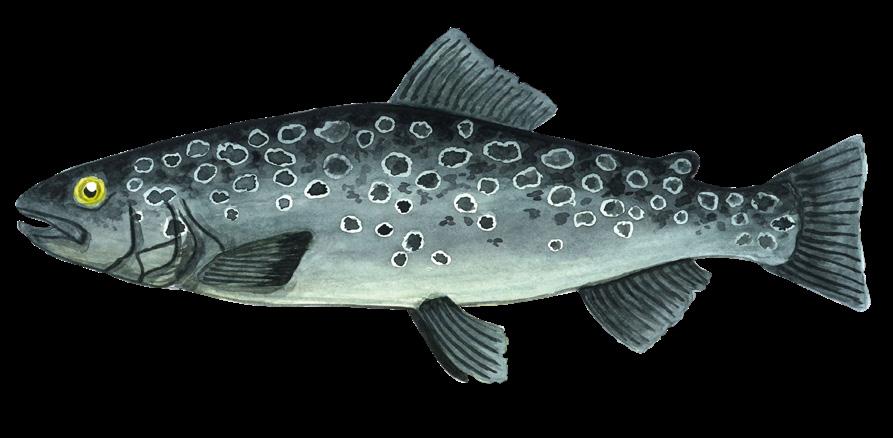
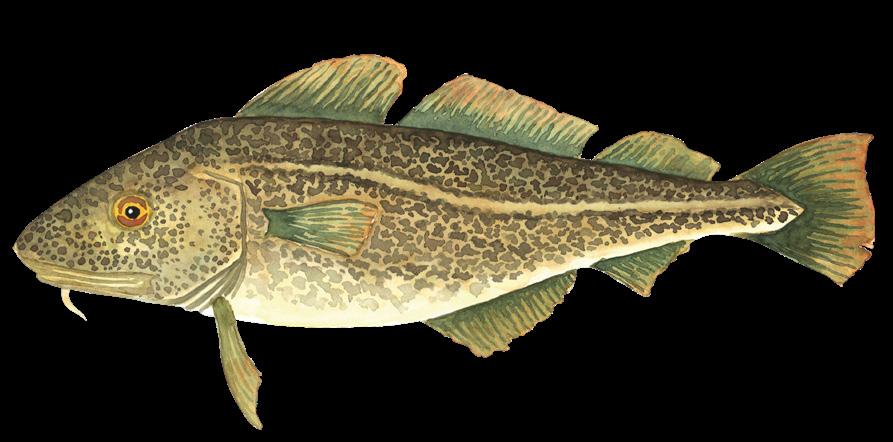
4D

4A: Three-spine stickleback. 4B: Nine-spine stickleback. 4C: Seatrout. 4D: Atlantic cod. Medium: Watercolour. Author: Elisenda Casabona
StereoBRUV - footage from underwater cameras during day deployment in eelgrass. A school of three-spine sticklebacks (Gasterosteus aculeatus) can be observed, attracted by the bait.
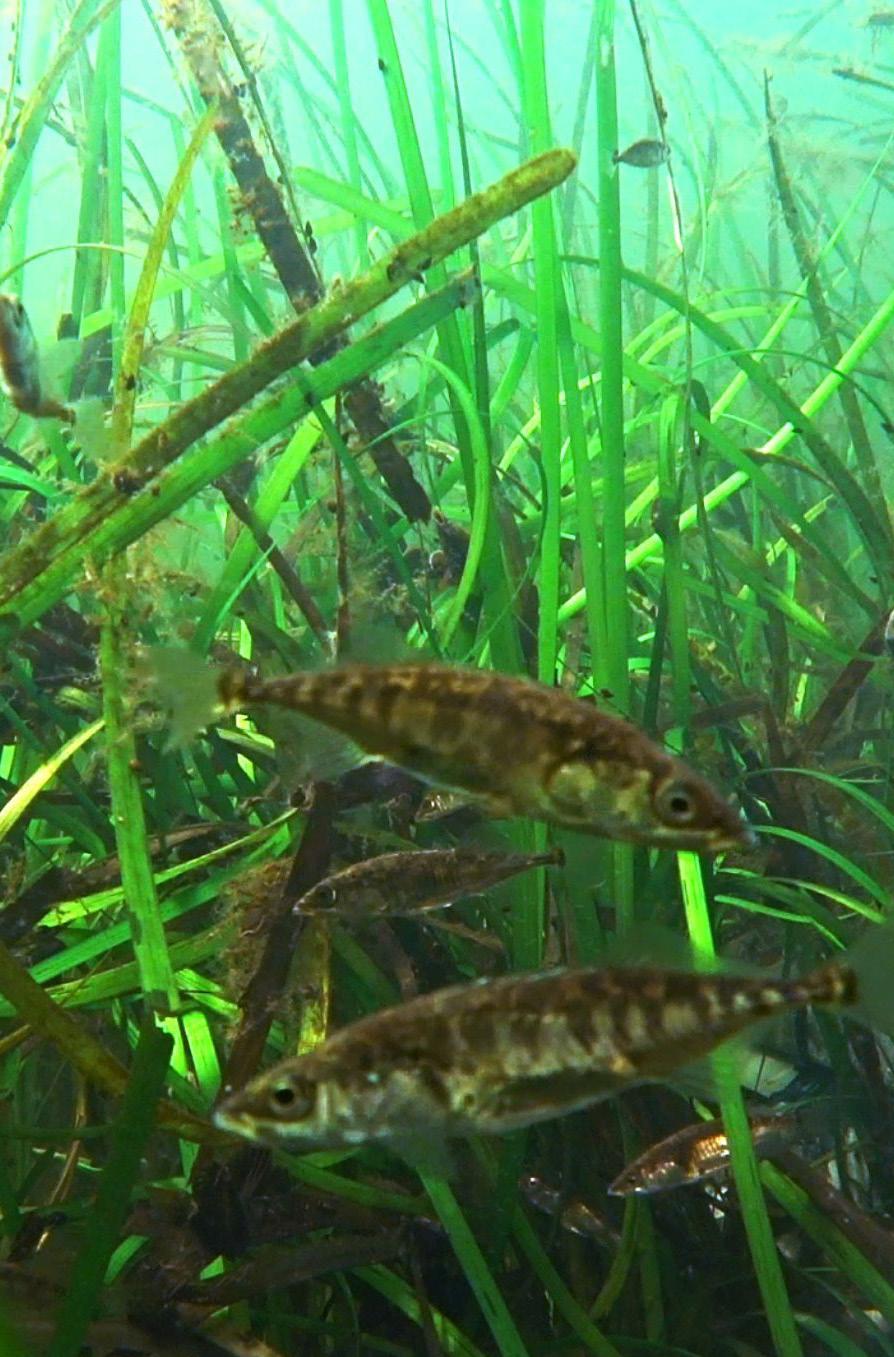
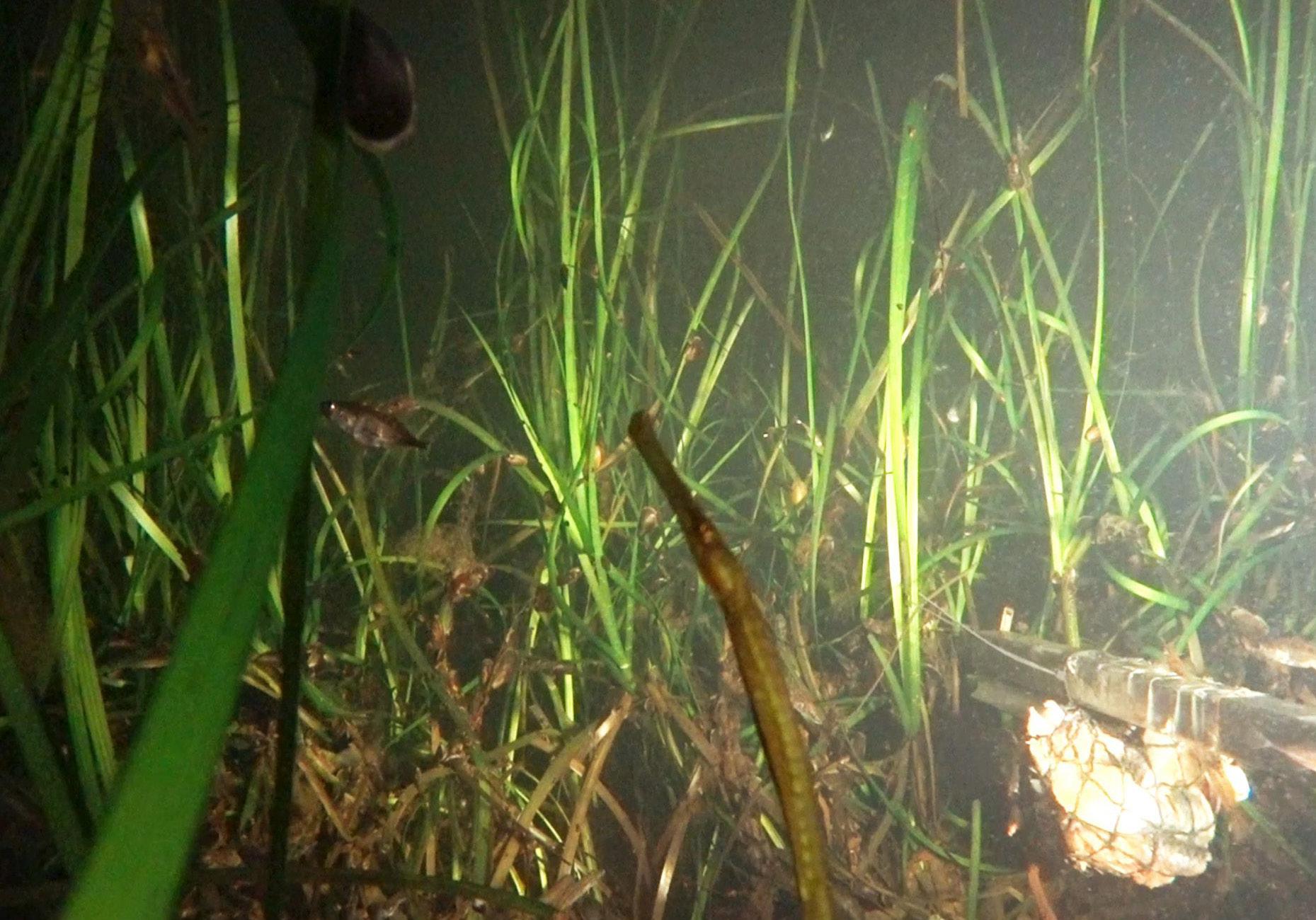
StereoBRUV - footage taken from night deployments. A pipefish (Syngnathidae) can be spotted in the frame. Because of their appearance, pipefish can camouflage themselves safely in eelgrass.

Worldwide, seagrasses account for almost 20% of ocean carbon sequestration; these are outstanding numbers, considering seagrasses’ limitation to shallow depths."
WHAT HAS BEEN DONE FOR ITS RESTORATION?
Over the last century, multiple countries have made efforts to restore the eelgrass coverage of their shorelines. A true success story can be followed in Hinase, Japan: The local fishermen have been reseeding eelgrass since 1985 using indigenous methods. This resulted in an impressive eelgrass coverage increase from 12 ha in 1985 to 250 ha in 2015. A 2021 genetic study revealed that these restored beds have higher genetic diversity than natural eelgrass beds; this is really positive as it shows that fishermen’s sowing did not develop unnatural eelgrass beds but rather aided natural recovery.
HOW DOES OUR RESEARCH CONTRIBUTE TO HELP SOLVE THE PROBLEM?
Our research project at DTU Aqua focuses on investigating fish abundance and diversity in eelgrass meadows of Roskilde Fjord. Protected areas like estuaries and fjords tend to exhibit great variability in eelgrass coverage from year to year; this has been linked to the eutrophic nature of enclosed sites (6). We deploy stereo baited remote underwater video systems (stereo BRUVS)9See equipment picture). These cameras are calibrated to work in a concept similar to human eyes - together, left and right cameras can measure the distance on footage. This is really useful for measuring fish size. Cameras are left to record for hour periods; this allows us to observe the behaviour and abundance of local species. The two species that we have been seeing frequently are Three-spined stickleback (Gasterosteus aculeatus) and Nine-spined stickleback (Pungitius pungitius). These species are particularly interesting for behavioural and evolutionary adaptations studies (7). Three-spined stickleback is considered to be the ‘ecological supermodel’ due to intensive research into parental and courtship behaviours. Overall, eelgrass is an incredibly important ecosystem engineer that affects its environment and surrounding fauna. However, eelgrass loss directly negatively influences us, as we are dependent on the services that eelgrass provides. Without eelgrass, shorelines are devastated by erosion. Without eelgrass, commercial fish and shellfish species lose nursing grounds and habitats; as a consequence, entire communities that depend on fishing as a source of income and food suffer. Without eelgrass, the organic carbon stored within the sediment depositions releases into the atmosphere, contributing to greenhouse gases and in the end result, climate change. Eelgrass requires a more holistic approach for it’s restoration. A more comprehensive approach is required to make drastic changes, as eelgrass beds are affected by multiple factors - bottom trawling, eutrophication, sea temperature and other anthropogenic activities.
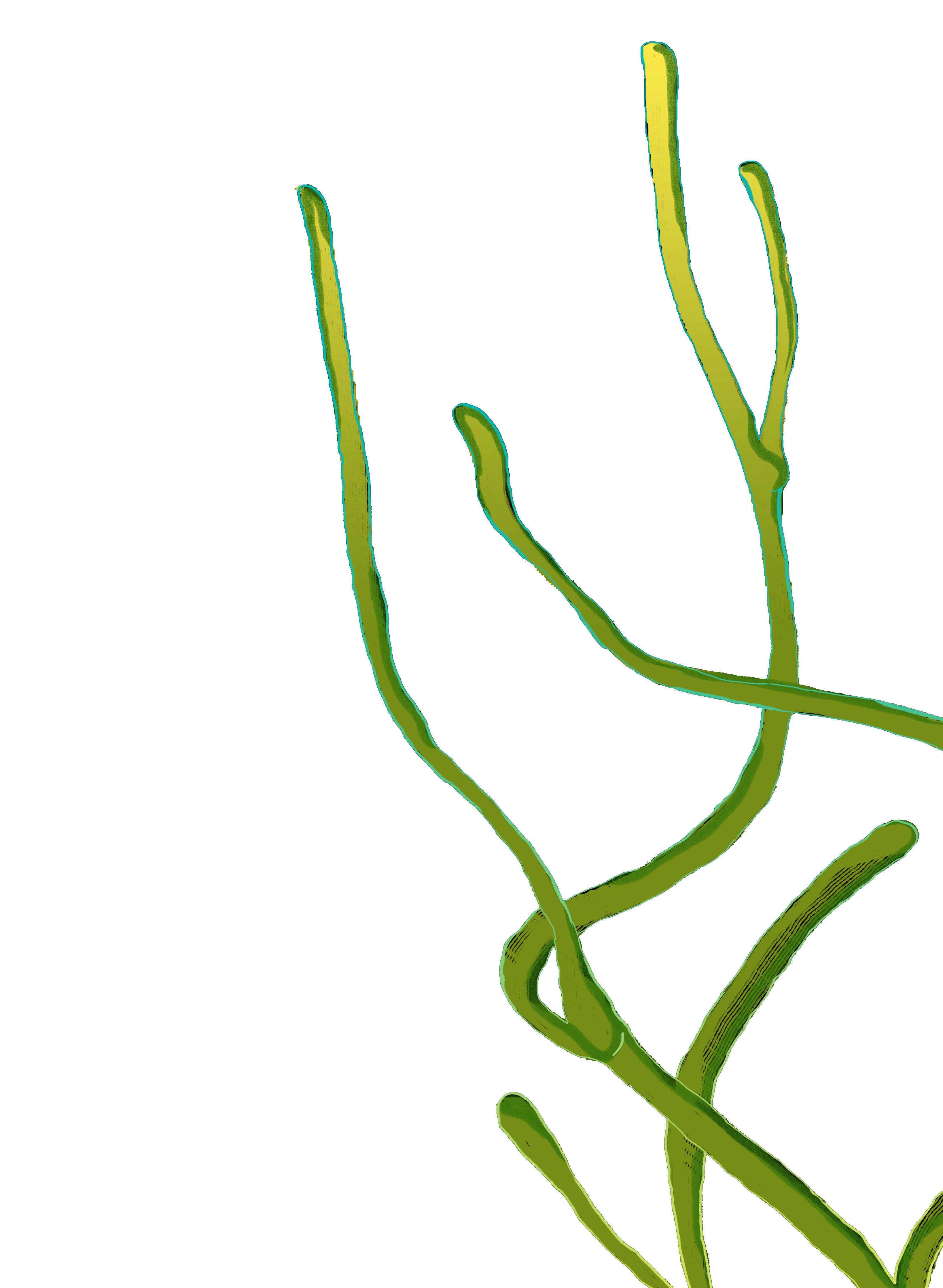
REFERENCES
1. ORTH R, CARRUTHERS T, DENNISON W, DUARTE C, FOURQUREAN J, HECK K et al. A Global Crisis for Seagrass Ecosystems. BioScience. 2006;56(12):987.
2. Röhr M, Boström C, Canal-Vergés P, Holmer M. Blue carbon stocks in Baltic Sea eelgrass meadows. Biogeosciences. 2016;13(22):6139-6153.
3. Reidenbach M, Thomas E. Influence of the Seagrass, Zostera marina, on Wave Attenuation and Bed Shear Stress Within a Shallow Coastal Bay. Frontiers in Marine Science. 2018;5.
4. Walter R, O'Leary J, Vitousek S, Taherkhani M, Geraghty C, Kitajima A. Large-scale erosion driven by intertidal eelgrass loss in an estuarine environment. Estuarine, Coastal and Shelf Science. 2020;243:106910.
5. Krause‐Jensen D, Duarte C, Sand‐Jensen K, Carstensen J. Century‐long records reveal shifting challenges to seagrass recovery. Global Change Biology. 2020;27(3):563-575.
6. Frederiksen M, Krause-Jensen D, Holmer M, Laursen J. Longterm changes in area distribution of eelgrass (Zostera marina) in Danish coastal waters. Aquatic Botany. 2004;78(2):167-181.
7. Guo B, Chain F, Bornberg-Bauer E, Leder E, Merilä J. Genomic divergence between nine- and three-spined sticklebacks. BMC Genomics. 2013;14(1):756.
PROJECT INVOLVEMENT AND ACKNOWLEDGEMENTS
Project Supervisor: Dr Jon Christian Svendsen, senior researcher, DTU Aqua
Project members:
Kamila Sarkeeva, exchange bachelor, University of Manchester Julie Terp Jørgensen, master, DTU Aqua Casper Roth Andersen, bachelor, DTU Aqua Svenja Stoehr, master, IMBRSea Anna Helene Syneva Wellm, master, DTU Aqua
DTU Aqua is grateful for the support from local organisations and the fishers who were involved in the research:
Niels Winther Christensen, Leif Henriksen, Arthur Sørensen and Jesper Simonsen who assisted with boats and helped with the fieldwork in Gershøj Havn, Roskilde Fjord during autumn deployments.
Kim Jørgensen and Jonn Poulsen, who assisted with boats and fieldwork and provided local knowledge for the fieldwork in Roskilde Fjord during the spring deployments.
Dansk Amatørfiskerforening.
Gershøj Fritidsfiskerforening.
This study was supported by the Danish rod and net fishing license funds, the EU Interreg project MarGen II and DTU Aqua.









